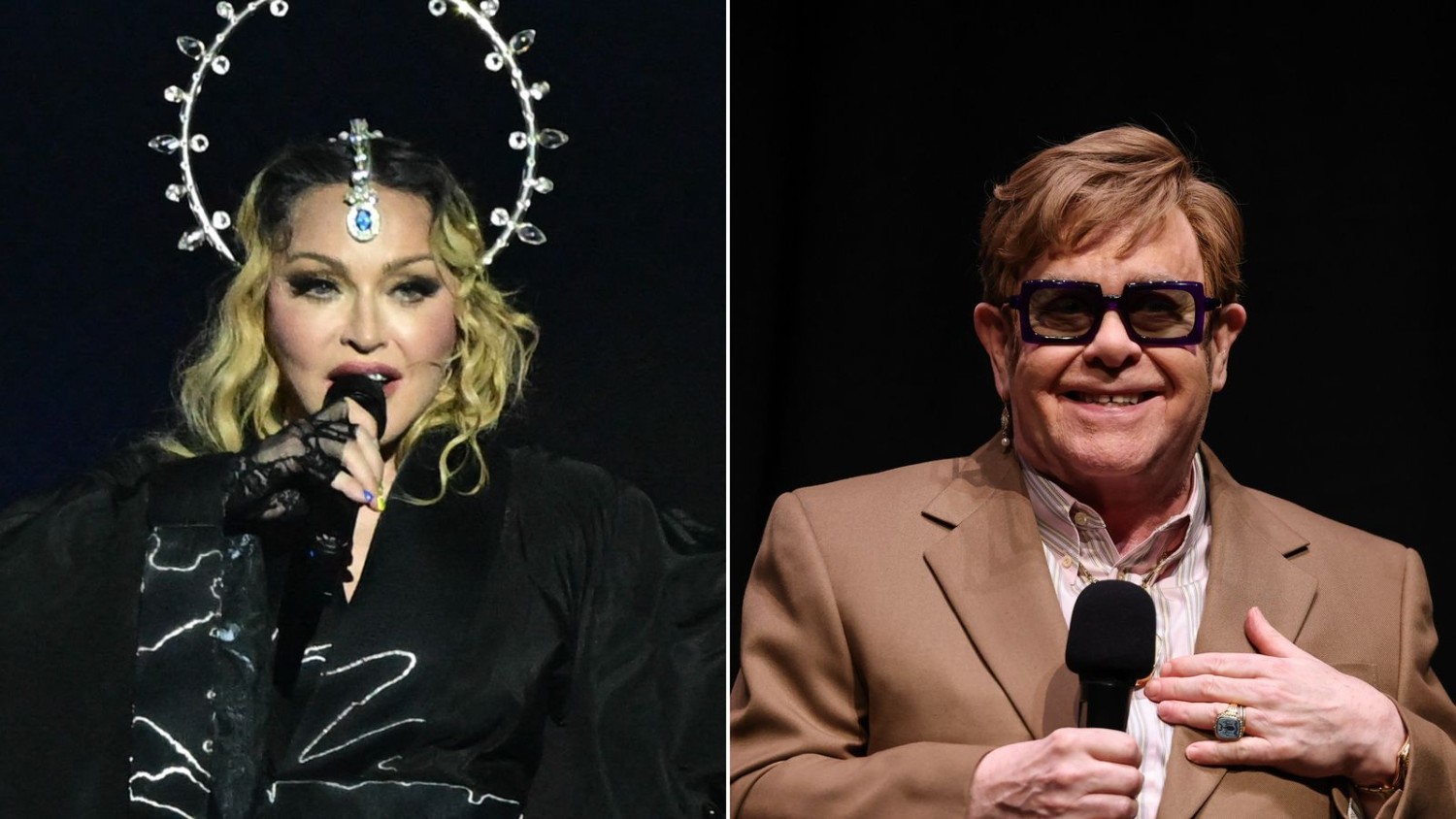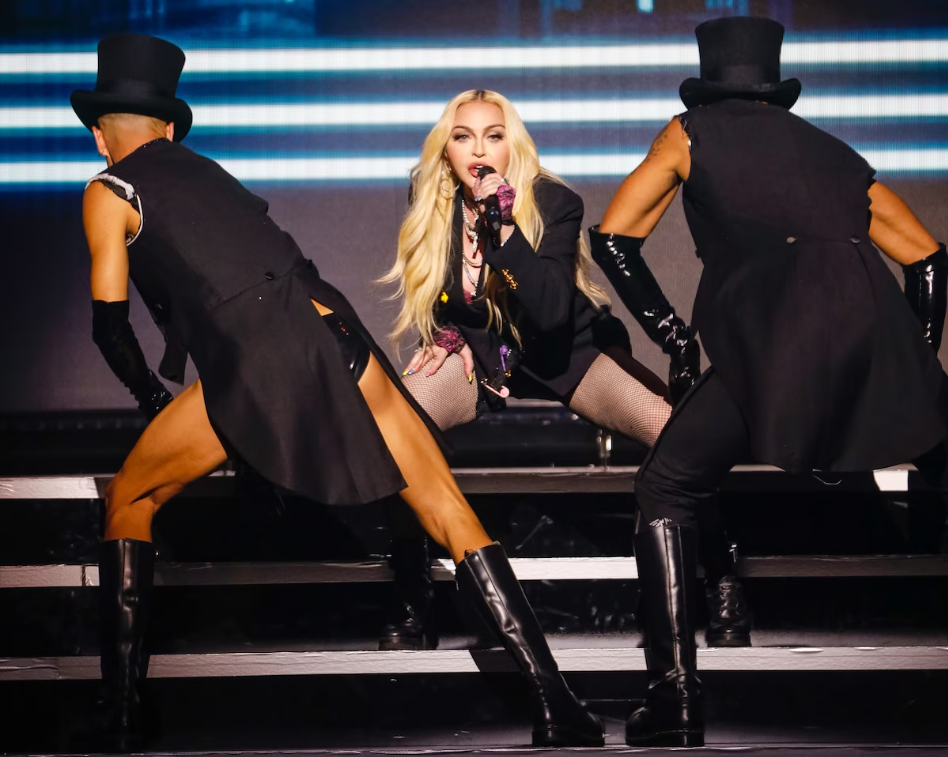
This article is more than
3 year old
Madonna has announced the North American and European dates of her concert tour, during which she will perform her most popular, era-defining songs. That’s 40 years worth of club dancing, provocative shape-shifting and sex-positive proselytizing. Madonna was one of the foundational female artists of the MTV dance pop genre, and this tour will be a testament to that legacy and a test of cultural boundaries. In “Madonna: The Celebration Tour,” the performer will be pushing against timeworn assumptions about gender and age at a moment when public dialogue can be very mean and very unforgiving on those very subjects. Godspeed, Madonna.
She announced her intentions on social media in a video that features a game of truth or dare — a reference to her 1991 film of the same name — with a clique of pals including Jack Black, Amy Schumer, Judd Apatow and Lil Wayne. The video is shot mostly in black and white and at times looks out of focus. Everyone appears a bit scruffy and like they’ve had a long night of loopy carousing. The effect is a video that is raw and self-consciously, gleefully transgressive, which is Madonna’s favorite kind of story to tell.
At the height of her fame and influence in the 1980s and ’90s, Madonna managed to offend pretty much everyone who considered themselves part of the establishment or who believed themselves to be charged with setting moral codes of conduct and defining social acceptability. She rankled the sensibilities of the Catholic church, Moral Majority and evangelicals. She made a career out of punching up at the powerful and the privileged. She stood on the side of outsiders. And for this — and her danceable beats and keen sense of aesthetics — she was beloved. She was especially vocal in speaking up for the LGBTQ community and celebrating elements of their culture, including ballroom and drag.
Most everything that made Madonna such a compelling cultural figure now has become a test, a challenge, a question. When she incorporated ballroom culture into her video for “Vogue,” she was applauded for shining a spotlight on this dance style created within the Black and Latin LGBTQ community. Now, there are conversations about cultural appropriation and whether she did enough to elevate the originators.
As a performer, she was always moving forward, always latching on to the next thing simmering just outside the mainstream. She altered her look to mark each new chapter, and her audience applauded her. But the culture is less likely to applaud the looks of a 64-year-old woman unless she is perceived as somehow defying the march of time or aging gracefully — which is to say walking quietly into the sunset wearing expensive cashmere and sensible shoes.
And Madonna has not been quiet. She recently caused a kerfuffle on social media for making note of how, with her book “Sex” in 1992, she paved the way for performers such as Cardi B and Miley Cyrus to sing freely about their sexuality; she’s been taken to task for wearing the traditional attire of people from North Africa; she likes to craft social media videos of herself in extreme close-ups that make her look ghostly and imperfect rather than glamorous and flawless. She continues to provoke. Her admirers applaud her for maintaining the same edgy sense of indiscretion that she had in her 20s. She is also admonished for still having such audacity. Madonna hasn’t changed, and the culture is conflicted about that.
It will be quite something when Madonna takes the stage and all the familiar beats begin to play. Fans won’t be coming to see her stand behind a microphone and belt out a ballad. The performance, in all its sweaty and sexy athleticism, has always been the draw: the voguing, the bullet bras and, of course, the look. She was the club-hopping ragamuffin, the Marilyn Monroe doppelganger, the dark-haired heretic, the platinum sex goddess. Her look has always told her audience something about how she sees gender and sex at a particular moment. Her body has been a statement about the politics of sexuality.
Beyoncé’s look book of fashion’s exhaustingly fabulous era
What will that look like now in this sixth decade of her life? Surely, it can be wondrous and engaging and tantalizing. But it can be hard to convince popular culture of that. When the 50-something actresses returned to the “Sex and the City” revival with all the familiar outré costumes and melodramatic storylines, they were practically pilloried for having the nerve to have aged.
Read More (...)